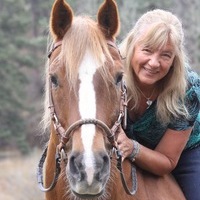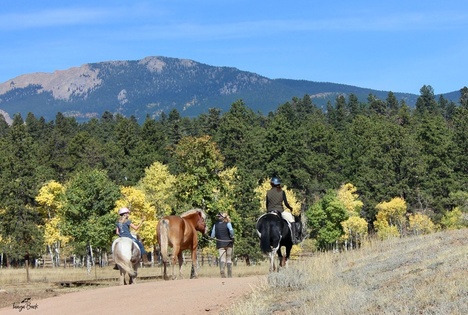
The Most Popular Horse Breeds Of 2019
Equestrian Advice & Guides General Equestrian
Build your business profile for FREE and expose your services to thousands of potential clients!
Create my profile now!
You’ve had an equine related “wreck” that scared you so badly, you don’t think you even want to ride again. Ever. But is this true? Can you overcome riding or just being with your horse? Do you want to?
The thing about fear to remember, is that we should have it. Without fear, we’d not survive and we’d run recklessly toward our ends a whole faster and with no thought. Fear is important, just as the ability to feel is important. Imagine not feeling pain, for example; how would you keep from doing serious harm to yourself? With fear, we are able to consider what might happen, and this can sometimes be to our detriment and why this article is being constructed.
Fear of the future can be taken a bit too far, and we see this when we find ourselves not wanting to do something because all we can imagine, picture and envision happening is terrible, scary and uncontrollable.
As a trainer, I’ll tell you that every single client comes to me due to fear, and each one has had one of these considerations driving them:
They will get hurt.
Death will result; or worse, incapacitation of their body or mind.
Their horse will be harmed due to their doing something wrong; either physically or mentally.
Fear of a past event; they’ve been hurt before and want to ride, but can’t get up the courage.
Their horse will purposefully harm them.
They will look bad and people will ridicule them.
They’ll be rejected and their horse won’t like them.
Rejection by people they like will result from their mistakes and they want to look good.
The list is endless, really, but suffice it to say all are legitimate and real. And all are based on perception of a future they don’t want.
How do we get past, through, over, under, or around our fears? There are hundreds of articles, books, videos, podcasts, memes, poems, and movies about how to overcome fear and the list is so long and extensive that I can’t begin go through them all here. But all can be boiled down to a few major points, or even just one: You Must Want to give up your fear and accept that you have little to no control over any outcome.
Another major point to consider and accept is that this is a healing process, not a marathon to be won.
Once you can say with certainty what specifically you are afraid of, you can employ one of the many ways to come to grips with what you must do to move on. At this point, it is important to take the competition element out of the equation. You may reach the end of your introspection with the realization that keeping your fear is your best option. It’s not imperative that anyone ever do something that terrifies them, but it is important to stay safe. When dealing with a 1,200 pound animal whose own self preservation system is fear-based, anything can, and will happen.
When you are clear on your goal, begin by identifying what most frightens you about riding. Be as specific as you are able and narrow the answer down until you find the future you most dread, then, go one step further and ask yourself if you truly want to give up the fear, and then pick your method of moving through the trauma that is quite real in your mind.
Here is a list of things you can try; choose one or more of them and immerse yourself in healing from the “hits” you usually get blindsided by fully immersing yourself in and through the process. Remember to be kind to yourself. Remember to go slowly and forgive your body for its unwanted reactions—you have no control over that happening. Remember to stop if it gets too overwhelming. Remember to allow yourself to quit the process and the horseback riding altogether if you must. Remember that this is not about winning or losing, it’s about healing and if you need to stop, you are not a failure. Again, be kind to yourself and remember that we all heal at different paces.
Okay, now for the list:
Once you are ready to ride, take your time, go slowly, remember this is not a competition. Be kind to yourself. Look to your horse for help and ask for his assistance. If you feel your heart rate increase, your palms sweat, prickles up your spine, short and fast breaths, or any other signal from your body telling you that fear is rising, stop. Go back for a bit and do something that makes you feel secure.
As always, if you would like to chat, or want a little more help, please contact me through my website: www.TanyaBuck.com
Your FREE Goodies for today is a Relaxation Technique Tip Sheet to overcome fear. Get it here: https://lp.constantcontactpages.com/su/uBUgDuC/FearTipSheet
Do what you can do when you can do so and have fun with your horse, Happily Ever After!
~Tanya Buck

